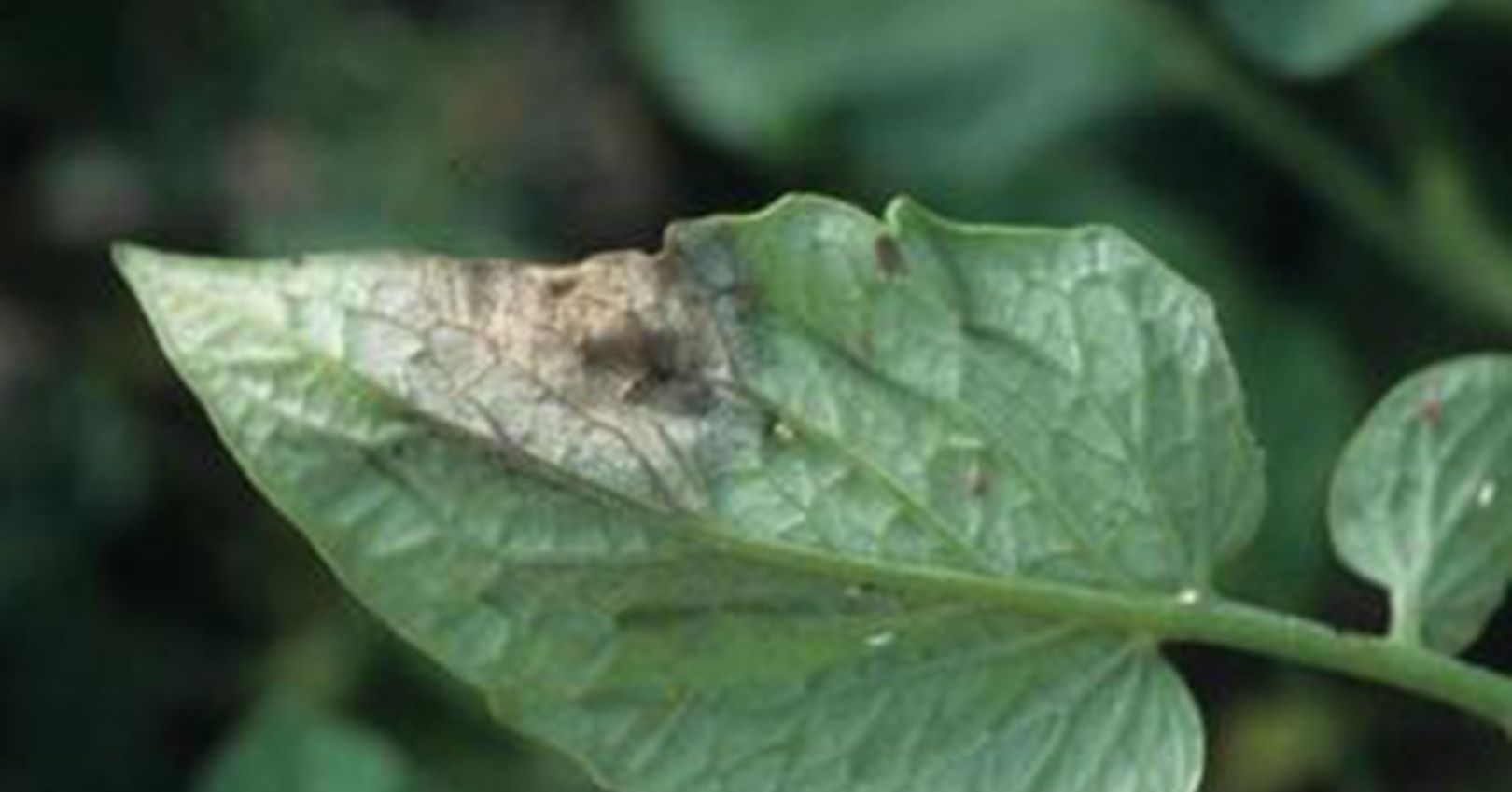Late Blight


Casual Agent
Late blight is a disease that can infect many solanaceous plants such as tomato, potato, and solanaceous weeds, however, there have been no reports of late blight in pepper or eggplant. The disease is caused by Phytophthora infestans and is infamous for causing the potato famine in Ireland in the 1840s.
Symptoms
All above-ground parts of tomato and potato plants can become infected. Foliar infections start out as small, water-soaked lesions that enlarge rapidly and become pale green. Eventually the leaves dry up and die. Severely infected plants can die. On the underside of leaves, growth of a white mold becomes visible on the lesions. Infected green fruit has brown or olive-colored lesions and often develop a soft rot. Infected vines also rot and have a foul odor to them.
Disease Cycle
Infections occur during periods of cool, moist weather, when temperatures are between 66 and 72⁰F. Above 86°F, infections will stop, but the pathogen can still survive and cause new infections when temperatures again become favorable. Symptoms can occur within three days of infection and plants can collapse so rapidly that they may appear to have been damaged by frost (Stevenson and Bolkan 2014). Phytophthora infestans survives on volunteer tomato and potato plants, solanaceous weeds (for example, hairy nightshade and bittersweet nightshade), petunia plants, and in tomato and potato cull piles.
Management
- Use resistant varieties. Burpee, Johnny’s Seed, and other seed companies have varieties with resistance to late blight including ‘Mountain Magic’, ‘Defiant PhR’, and the cherry tomato variety ‘Lizzano’.
- Use fungicides. See fungicide table below for a list of effective products for control of early blight.

